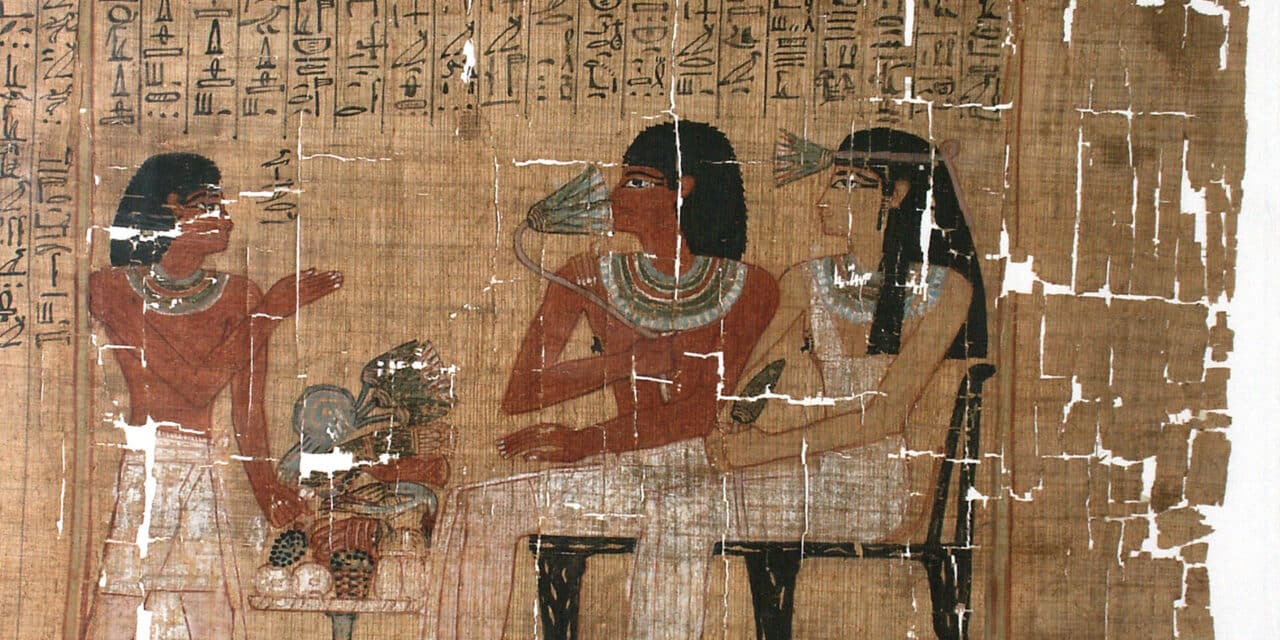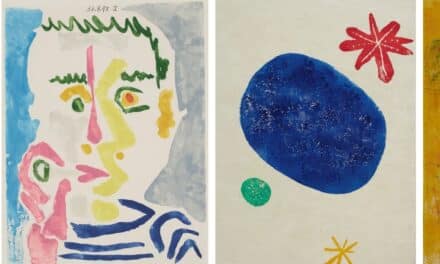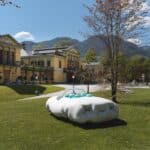Eine Sonderausstellung im Papyrusmuseum der Österreichischen Nationalbibliothek präsentiert bis 5. Mai 2024 einzigartige Papyri aus der griechisch-römischen Zeit, die die Faszination Nil dokumentieren.
Dem griechischen Geschichtsschreiber Herodot wird die Aussage zugeschrieben, Ägypten sei „ein Geschenk des Nils“. Er bezog sich damit auf die jährliche Nilflut, die einen breiten Landstreifen unter Wasser setzte und bei ihrem Rückgang fruchtbaren Schlamm als Dünger zurückließ. Diese Überschwemmungen prägten den Lebens- und Arbeitsrhythmus, aber auch die religiösen Vorstellungen des antiken und mittelalterlichen Ägyptens und sicherten dem Land reiche Ernten und damit Wohlstand.
Die Schau zeigt eine facettenreiche Auswahl von über hundert Exponaten, von denen viele das erste Mal öffentlich ausgestellt werden. Sie beleuchten jene vielschichtige Thematik, die bis heute von besonderer Bedeutung ist: ein achtsamer und nachhaltiger Umgang mit der kostbaren Ressource Wasser. Zur Zeit der Pharaonen gab es genauso wie heute große Anstrengungen um zusätzliches Ackerland, sauberes Trinkwasser, ausreichende Bewässerung und den Kampf gegen die Wüste.
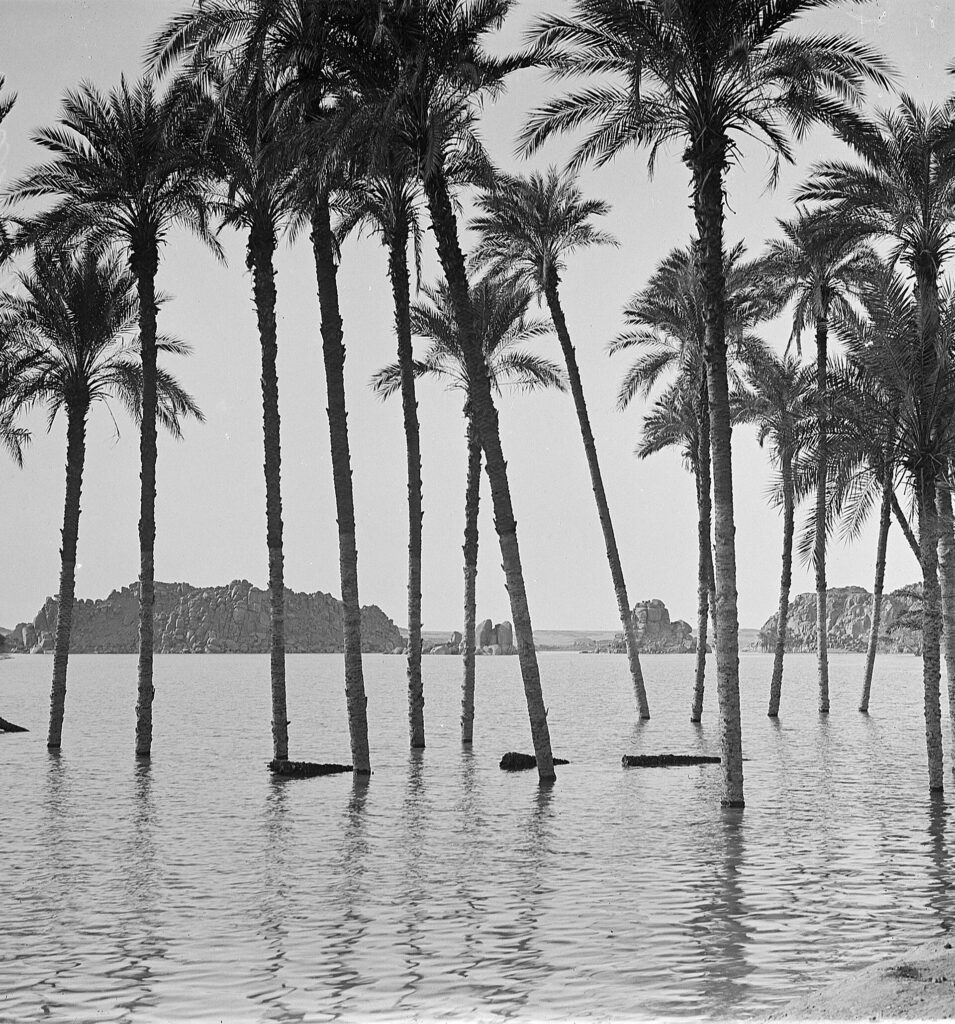
Blick vom Ufer des Nils bei Schellal, Fotografie, 9. Jänner 1904 © Österreichische Nationalbibliothek
Die Papyrussammlung der Österreichischen Nationalbibliothek beherbergt zahlreiche Originaldokumente aus der pharaonischen, griechischen, römischen und früharabischen Zeit, an denen die vielfältigen Aspekte der „Wasserwirtschaft“ beleuchtet werden können. Die Texte berichten von einem staatlich gelenkten und überwachten Umgang mit Wasser und von den Anstrengungen um die Instandhaltung des hoch entwickelten Bewässerungssystems, damit die Nilflut zwar einerseits möglichst viele Ackerflächen erreichen konnte, andererseits aber auch keinen Schaden durch Überwässerung anrichtete.
Alle Ägypterinnen und Ägypter hatten an fünf Tagen pro Jahr für die Instandhaltung dieser Anlagen zu arbeiten; die Schleusen wurden bewacht, Schöpfräder und Ziehbrunnen sorgten für zusätzliche Wasserzufuhr. Der Nil und das Bewässerungssystem dienten außerdem dem Transport und den Reisen auf dem Wasserweg – in der römischen Kaiserzeit hielt darüber hinaus die Badekultur mit beheizten Thermen auch in Ägypten Einzug. Die Papyri aus dem Bestand der Österreichischen Nationalbibliothek dokumentieren zudem die Regelungen der Wasserrechte, die steuerlichen Vergünstigungen in Trockenperioden und die Maßnahmen der Regierungen gegen das Vordringen der Wüste.
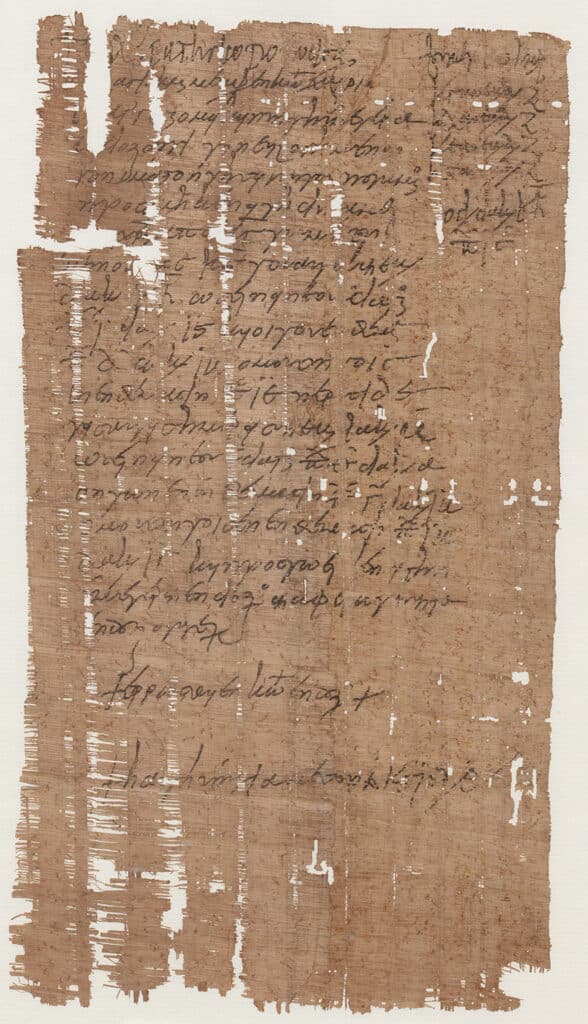
Bericht über das Steigen des Nilwasser (Papyrus, griechisch, Memphis, 19. August 575 n. Chr.) © Österreichische Nationalbibliothek
Da das Nilwasser in dem regenarmen und von Wüsten umgebenen Land die einzige Wasserzufuhr war, hing die Ernte von der Höhe der jährlichen Überschwemmung ab. Die Bewohner*innen Ägyptens haben deshalb durch Be- und Entwässerungsanlagen versucht, die kostbare Ressource Wasser möglichst effizient einzusetzen. Die sehr früh organisierte, gezielte Nutzung des Nilwassers durch ein komplexes System von Kanälen, Dämmen und Deichen ermöglichte den Aufstieg Ägyptens zu einer der ersten großen Ackerbaukulturen der Menschheit und dürfte ein wesentlicher Faktor bei der Entstehung früher gesellschaftlicher und staatlicher Strukturen gewesen sein. Die jährlich wiederkehrenden Überschwemmungen fanden erst mit der Eröffnung des großen Assuan-Staudammes 1970 ein Ende.
Die in der Sonderausstellung gezeigten Objekte öffnen ein Tor in das Alte Ägypten und ermöglichen den Blick in den Alltag der Menschen.
14. Juni 2023 bis 5. Mai 2024
www.onb.ac.at

